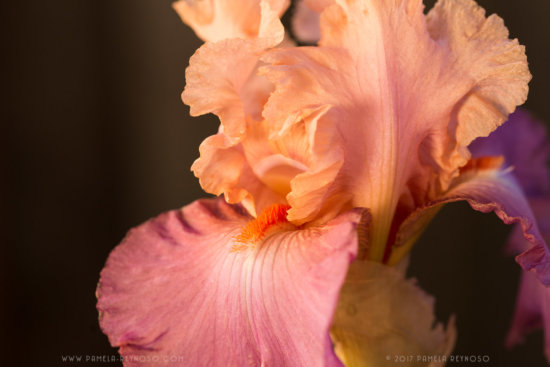Being a Control Freak with Macro Photography
One benefit of macro photography is the ability to sculpt the light. Unlike landscape photography, you aren’t necessarily stuck with the light nature has dealt you. Understanding how to sculpt the light with reflectors and diffusion allows for a bit more creativity and flexibility in the field. The correct tools can help you create beautiful images even when the sun is higher in the sky and the light is harsh.
Diffused Light
What do diffusers do?
Diffusers remove harsh light and shadows by reducing and spreading the light that passing through them. This creates a much softer, more even light where shadows and highlights both become more muted and colors become cooler.
When I am out in the field, I carry a 12″ diffusion disk with me as well as a 32″ disk. I use the smaller one for small subjects, but I use the larger one when I want to diffuse the light on the subject as well as a too bright background.
Sure, I could use post processing ‘burning’ or a vignette, but I prefer to be more deliberate and do as much as I can in the field and in-camera.
The images below were taken in RAW format and barely edited; I wanted you to see the actual in-camera results without any adjustments.
Reflected Light
Reflecting is useful to balance the exposure on your subject from side-to-side such as with a side lit subject, to add a little light to the deeper recess of the subject, or to highlight a specific area.
You can also use reflection to make the entire subject brighter than its background. When you set the correct exposure for your subject with the additional reflected light, the background is darkened and less prominent. Because of this, the brighter subject becomes more prominent.
Where diffusing softens the scene and cools the colors, reflected light makes colors ‘pop’. It also wraps the subject in light in a way that adds depth and dimension. My reflector disk is silver/gold which also warms the colors onto which I reflect light. (I will often take a photo with a white color chip if there is no white in the scene, in case I decide I do not care for the effect of the warmer reflected light and decide to cool the colors in post.)
For macro florals, the 12” reflector is more than adequate. Its small size provides more control as to where the light is reflected (keeping it off of any background elements) and allows me to easily feather the light across my subject. A very small adjustment of its position can make a huge difference in how much light is reflected and to where. Feathering the light from a side can still add light, but do so in a way that does not eliminate shadows and the contours they provide.

For this image I placed a reflector opposite of the sun in order to light the the iris more evenly side-to-side. The reflected light balanced the light significantly, equalizing both the shadows and the highlights as well as pushing light into the recesses of the flower.
One thing I really like about reflected light on a subject is how it allows you to adjust your exposure for the very bright subject. This darkens the background and makes it less significant. Take a look at the photo below…
Using Both Reflector & Diffuser
Using diffusion and reflection in tandem is a powerful way to sculpt light to your advantage and create images with significant impact no matter if the sun is high in the sky or lower. With in-tandem use of diffusion and reflection the position of the sun is of far less importance than when you have no light sculpting tools at your disposal. Take a look at the following image which shows the results of both diffusion and reflection.
In this image above diffusion and reflection were used simultaneously to sculpt the light. There are soft shadows on the right side of the flower and a gentle feathering of reflected light on the left side. I love how the light modifications create a more impactful image and how the colors ‘pop’.
Below you will see a diffused light image and an image with unmodified sunlight.
The next time you are out in the field, experiment with light sculpting by taking along a reflector and a diffusion disk. You might be amazed with the results as you practice bending the light to suit your vision.











